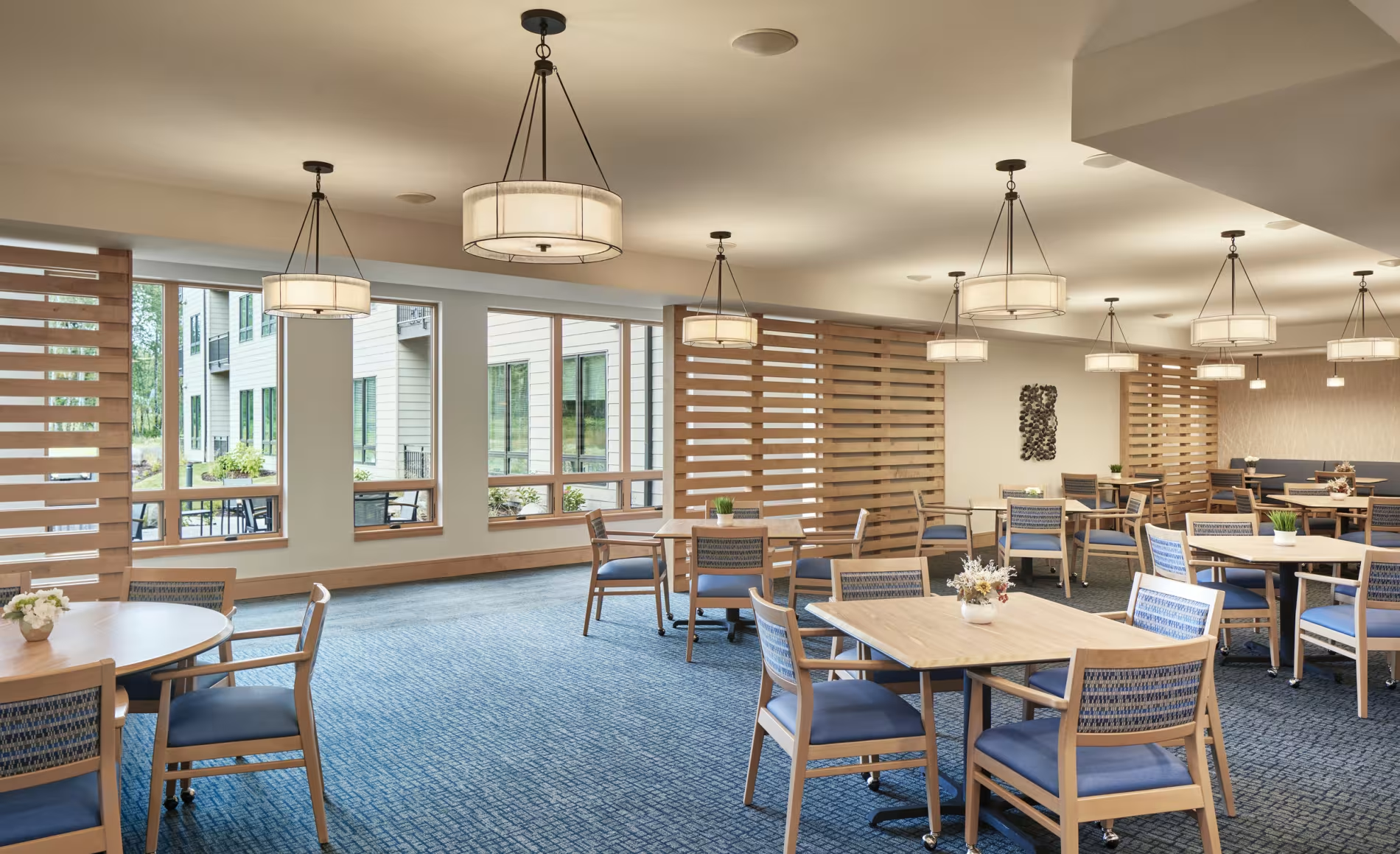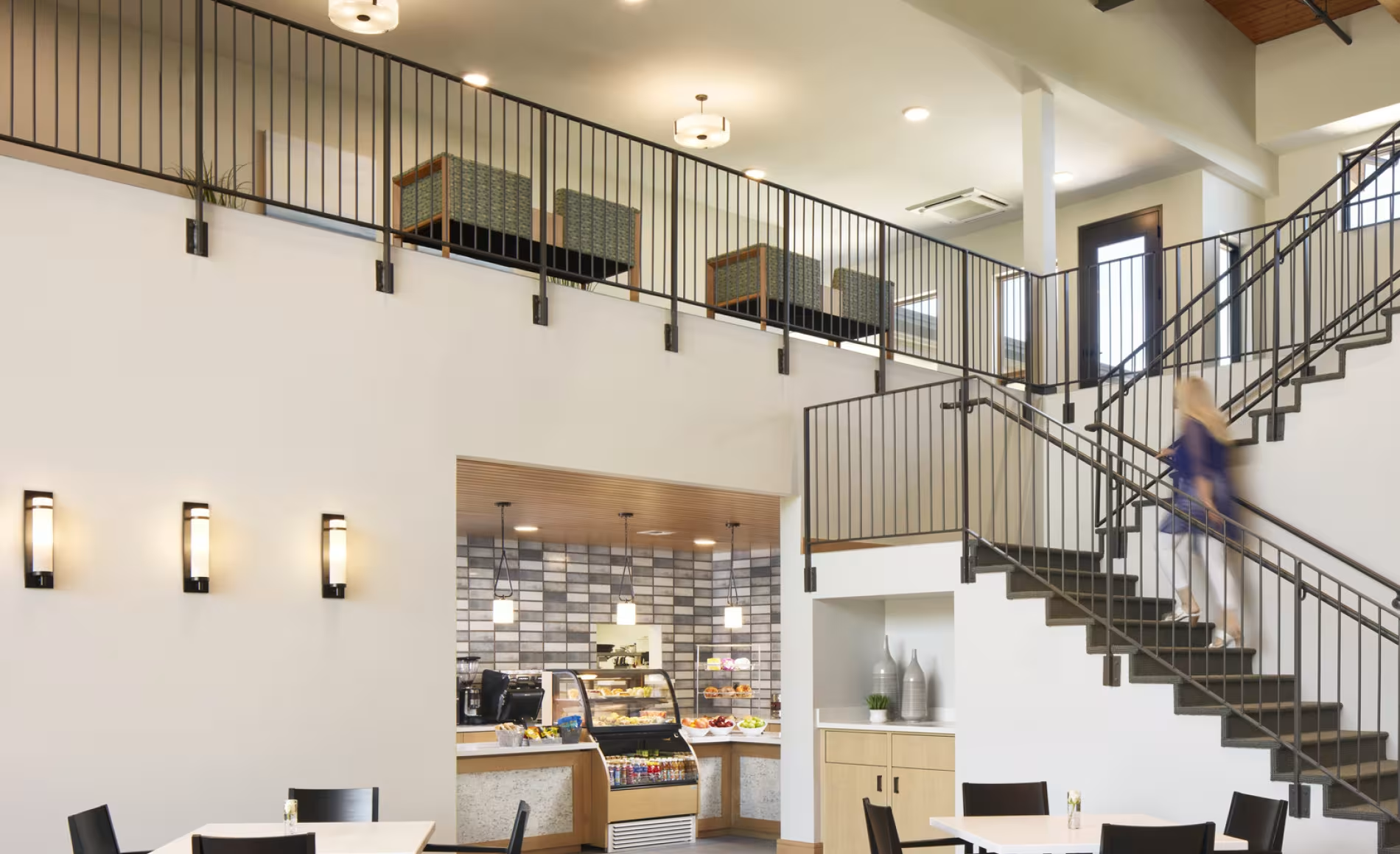How Biophilic Design Impacts Living Well

A version of this piece was originally published in Seniors Housing Business.
Throughout history and across cultures, architects have drawn inspiration from nature to emulate a sense of well-being, serenity and connection within their finished space — evoking similar feelings and sensory perceptions as the awe of the natural world.
This process is known as the immersive integration of biophilic design, a concept utilized by architects to respond to the innate need of humans to connect to nature through direct and indirect exposure.
Biophilia was woven into design long before it became a buzzword. Today, architecture firms are merging technology, humanity and bio-philia to meet the needs of the 21st-century psycho-social condition.
One particular area that is seeing greater interest in biophilic design is seniors housing communities. Since the onset of the pandemic, health and wellness concerns, especially among the senior population, amplified demand for building lay-outs and amenities that support efforts in improved overall health for aging populations.
Architects, designers and developers are increasingly realizing that biophilic design and strategic programming of outdoor spaces can enhance the aesthetic appeal of their communities and bolster overall experience and wellness of residents, while also aiding in strategic, cost-effective uses of resources.
Life-centered wellness
As the baby boomer generation — nearly 22 percent of the U.S. population — retires, the design practices behind senior living facilities must mirror evolving consumer demands. This is a generation passionate regarding trends to promote longevity and increase mind-body awareness.
Today’s seniors especially want to remain cognitively savvy, physically active and socially engaged. Through premier design innovations, architects and developers are pivoting to create facilities that more closely align with these concepts.
Research has long shown that a strong connection to the outdoors is correlated with greater happiness, higher energy levels, peace of mind and an overall strength in physical and mental health.
In fact, according to a study conducted by Roger Ulrich in 1984, 23 surgical patients assigned to rooms with windows offering a view of trees and shrubs had shorter post-operative stays, required less pain medication and had a better attitude than 23 matched patients in similar rooms with a view of a brick wall. Additional studies over the last few decades have found that biophilic design can improve cognitive function, physical health and psychological well-being.
Today, we see this concept increasingly applied to senior communities. Often design starts with leveraging existing natural surroundings.
For example, we recently implemented a range of biophilic design elements at Wesley at Tehaleh Senior Living, a Shared Ministry between Wesley and Presbyterian Homes & Services in Bonney Lake, Washington. Located within a 43-acre master-planned community, the property features a total of 228 units surrounded by the quintessential landscape of the Pacific Northwest. From every direction, residents are greeted with an experience, from the crisp air of the surrounding forest to the gorgeous views of Washington State’s most revered landmark: Mount Rainier.
Designers can also implement biophilia by fusing the interior space with as much daylight as possible, beckoning the outdoors inside.
At Wesley at Tehaleh, in a hallway connecting two buildings, we added windows to orient the residents while simultaneously inviting natural light and campus views into the space. This “biophilia breezeway” serves as a connection between a resident wing and the amenity spaces.


A heightened sensory experience
Well-executed biophilic design, like any good design, spawns a feeling. In senior living, we strive to inspire delight and rejuvenation while fostering community.
Designers appeal to the five senses and the fluidity of the outdoor-indoor experience. The earth tones of a biophilic approach are sensual, warm and grounding. The sound of a flowing creek, the aroma of fresh flowers or the generous views of the forest and mountains can be transformative.
The intimacy with sonic, visual and feeling fluctuations of nature decreases stress, fatigue and fear, and increases an overall sense of freedom and autonomy for the resident.
As an example, we wanted the design of Wesley at Tehaleh to reflect not just communion with nature, but with one another. We made certain our design was welcoming, placing common space amenities for reading, working, relaxing and creating around a center hearth room. Knowing there is a center, a place a resident can frequent for life and vibrancy, is in itself a reassurance for the nervous system.
Wesley at Tehaleh also provides residents with large, grandiose windows within their units, providing a nearly panoramic view of the out-doors. This design choice allows them to be inspired by nature from the moment they wake to the moment of sunset.
Further, progressive design trends of biophilia encourage movement outdoors and interactive play with nature. We’ve seen this achieved through amenities like a pickleball court, outdoor amphitheater and idyllic butterfly garden to promote resident engagement.

Cost-effective regenerative benefits
In addition to biophilia’s considerable direct benefits to resident well-ness, another key element of this design practice is its use as a tool of sustainability and natural regeneration. Biophilia naturally supports meeting energy goals while promoting this new paradigm of dynamic health and aging.
Energy modeling and building performance are key components of biophilic design that can also aid in meeting LEED criteria for projects.
The use of natural materials is paramount to a design and energy performance standard, and that includes manipulating light. Immer-sive daylighting studies, envelope performance criteria and ecologically sound landscaping can greatly reduce the footprint of larger projects.
We implement design with ecosystems and water in mind. With the increase of strategic landscaping, foliage on big projects increasingly echoes the native plants of the surrounding region. Further, the use of no-mow fescue greatly reduces the need for water consumption.
Another strategy we’ve begun to implement at our communities is “eco-signage” with maps that explain the methodology and ecological benefits behind sustainable garden and yard landscaping.
Giving people the tools to understand the thinking behind sustainable design aesthetics allows for greater understanding and appreciation of the long-term impact for the environment, as well as pride in their home.
Additionally, educating older generations about their role in sustain-ability couples nicely with empowered independence. We have found that once these older generations understand the means behind architecture trends and landscaping, they harbor a greater appreciation and excitement for the facility.
Design has reached a pivotal moment. The future is regenerative, and that encompasses more than just an aesthetic. It is a way of nurturing the shared, lived human experience — one that is person-centered.
This is especially vital to older generations that will continue to embrace holistic wellness, longevity practices and value in co-creating a deeper connection with nature. What better way to bridge the gradient of “man and nature” than with conscious, forward-thinking design?